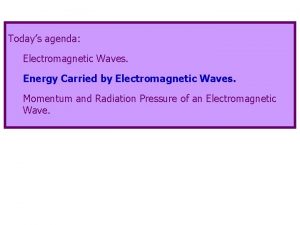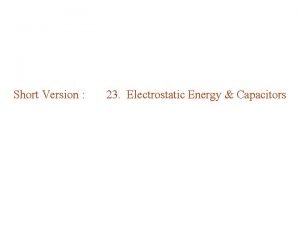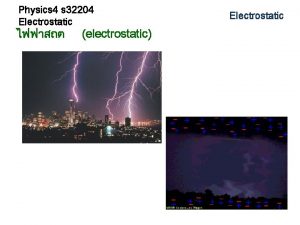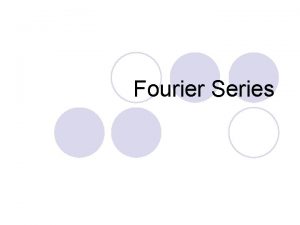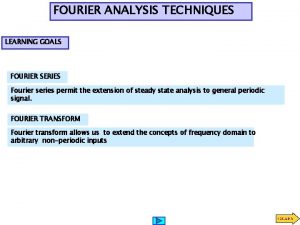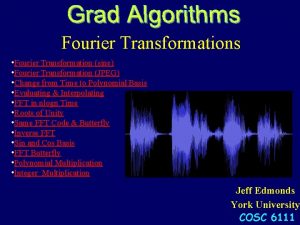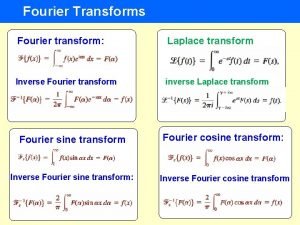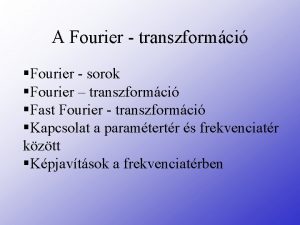Fourier resolution of electrostatic field LL 2 section












- Slides: 12

Fourier resolution of electrostatic field LL 2 section 51

The Fourier integral is an expansion in waves. This can be applied to the field of static charges.

Static field does not satisfy the homogeneous wave equation Since But The same holds for each term in the linear expansion of the static field in terms of monochromatic plane waves, so the usual dispersion relation does not apply.

The planes waves used in the expansion of a static field must have zero frequency, since But the wavevectors of these plane waves are not zero, since

Field of a point charge Poisson’s Equation Fourier integral Plane waves with w = 0 Coefficients. “Amounts” of each Fourier component. A function of wavevector k.

Inverse transform How we find the “amount” that each plane wave contributes to the expansion. We “project” the potential on to each plane wave with wavevector k.

Apply Laplace operator to both sides of expansion of potential Fourier component of Df is

Expansion of Laplacian of potential

Inverse Poisson’s equation for point charge This gives a second expression for the Fourier component of the Laplacian of point-charge potential

Equate the two expressions Fourier coefficient in planewave expansion of potential of a point charge Terms with slow spatial variations (small k) dominate. f Q No wiggles

Expansion of electric field But

For point charge Waves that superpose to give the Coulomb field are polarized parallel to their wavevectors: Longitudinal. Electric field points in the same direction as the change in E with r. r
 Formula for work done
Formula for work done Energy density electromagnetic wave
Energy density electromagnetic wave Electrostatic energy density
Electrostatic energy density High resolution low resolution
High resolution low resolution 21lwuy8i6hw -site:youtube.com
21lwuy8i6hw -site:youtube.com Field dependent vs field independent
Field dependent vs field independent Field dependent vs field independent
Field dependent vs field independent Electric field and magnetic field difference
Electric field and magnetic field difference E field h field
E field h field Database field types and field properties
Database field types and field properties Field dependent and field independent
Field dependent and field independent Magnetic field
Magnetic field Electrostatic disinfection chelsea
Electrostatic disinfection chelsea

